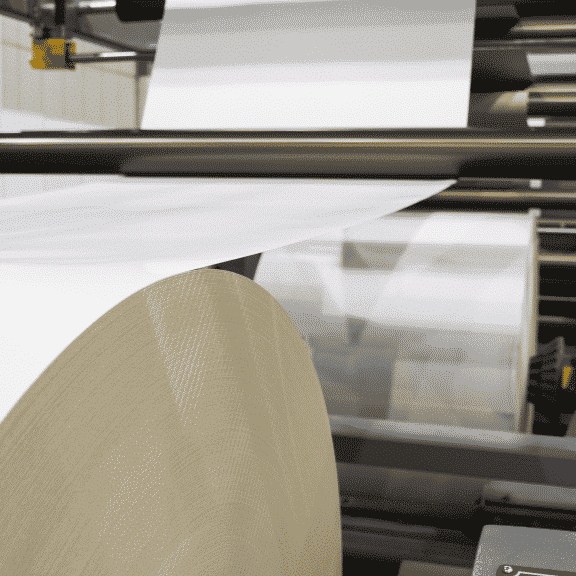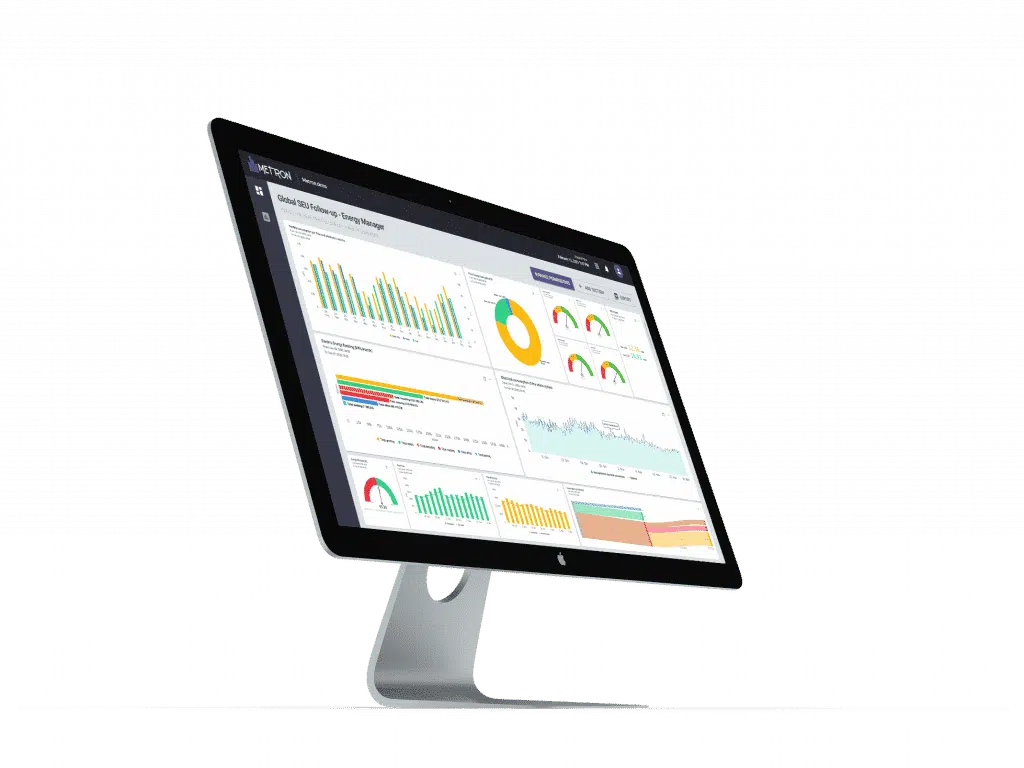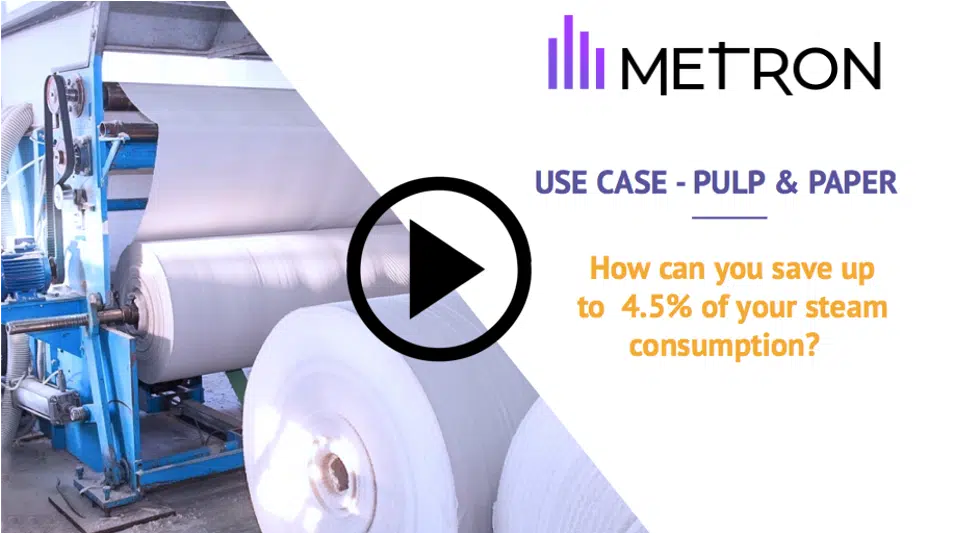
Energy, a Great Optimization Potential for Paper Industry
Energy management is a key point in the paper industry. Indeed, the manufacturing process is very energy intensive. The paper machine is by far the largest energy-consuming part of the mill and requires a large amount of steam to dry the pulp. Optimizing it can lead to significant savings.
Find out how to optimize your mill's energy consumption and carbon footprint with the METRON solution:
Energy, a Great Optimization Potential for Paper Industry
The collection, aggregation and storage of your site's data within the METRON platform provides your teams with the transparency they need to manage and optimize consumption.
With the understanding of the behavior of the equipment according to their different conditions of use and the variables influencing the production, METRON can model the equipment of the site.
Once the variables have been classified by order of influence on electricity and gas consumption, thousands of scenarios can be played to define optimization actions:
- Find the optimal retention agent usage ratio.
- Reduce steam consumption.
- Monitor in real time to save time and improve reporting.
- Simulate the replacement of existing equipment.
Examples of Collected Data in the Paper Industry
- Steam consumption (by scope, equipment).
- Steam quality and pressure (dryers, evaporators, turbine).
- Fuel consumption (gas, coal, black liquor).
- Consumption of chemical agents.
Case Study in Colombia : How Can You Save Up 4.5% Of Your Steam Consumption?
Committed to the results of its various products and services, a Colombian paper manufacturer chose METRON to reduce its steam consumption without investment and while maintaining quality, by optimizing the chemical retention dosage in the drying process.
The deployment of the energy intelligence platform and the collaboration between METRON's energy experts and the client's operational teams allowed the mill to save time and reduce its energy budget for the same consumption, totaling -$190,000 per year on energy and chemical bills, while maintaining the same quality and production.



